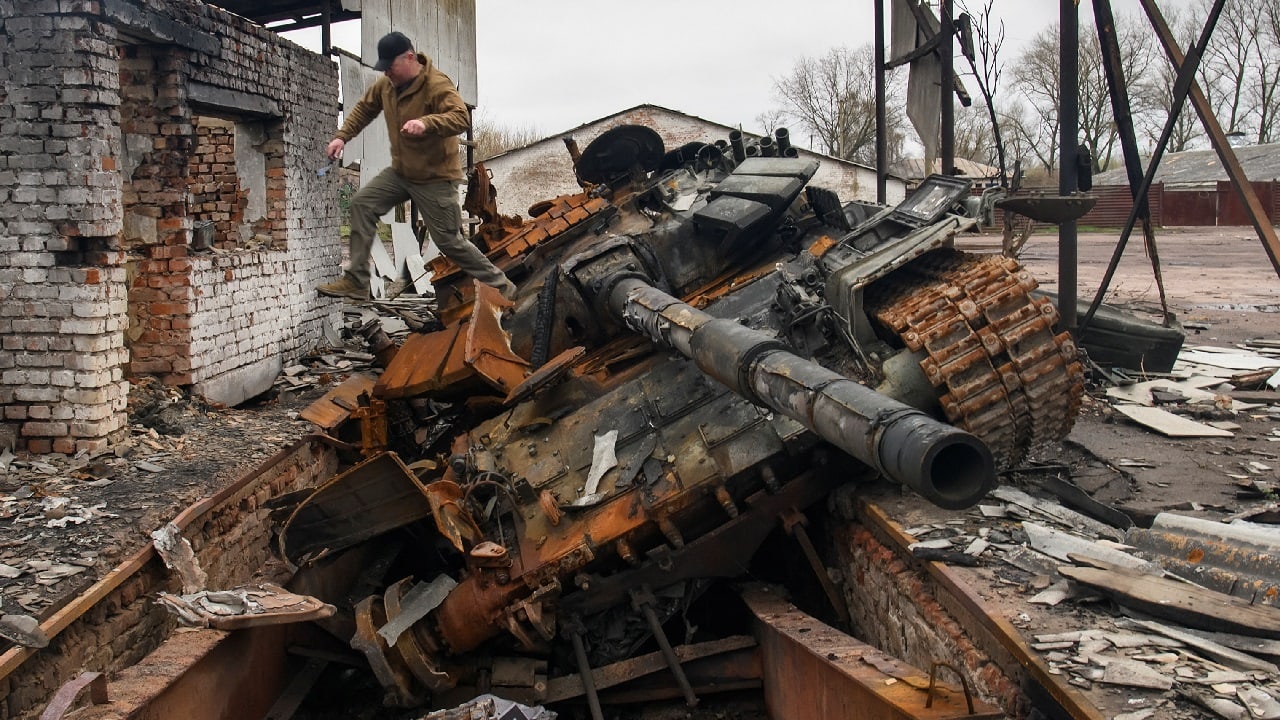As Ukraine’s counter-offensive continues to heat up, more reports involving the destruction of Russia’s military equipment are coming to light.
From main battle tanks (MBTs) to missile launchers to armored vehicles, Moscow’s arsenal has been taking major hits.
This week, a T-72 MBT was obliterated by the Ukrainian army near Avdiivka, Donetsk Oblast. While this scenario has played out many times since the onset of the invasion, Russia’s current tank arsenal is at an all time low since February 2022.
Images show destruction of a Russian T-72
In photographs shared by the open source intelligence group Ukraine Weapons Tracker, a destroyed T-72 with a cope cage and a BTR-80 armored personnel carrier is depicted. A second image displaying another BTR-80 APC was shared as well. Main battle tanks have played a huge role in Russia’s ongoing invasion of Ukraine, indicating that these age-old military systems can still be relevant in modern warfare.
Back in the 1960’s, the Soviet Union desired a replacement tank for its T-62 to better counter its Western counterparts. Two design teams were tasked with designing the enhanced tank, and the T-72 was ultimately selected as a cost-efficient alternative. The new tank featured a litany of improvements to its predecessor, including a 125mm smoothbore gun and a 12.7mm anti-craft machine gun. Additionally, the T-72’s hull and turret are protected by armor plating and explosive reactive armor.
T-72 specs and capabilities:
Since its introduction to service more than five decades ago, the T-72 has undergone several facelifts to maintain its edge over competitors. In 2014, the tank family was first deployed by Russian forces and subsequently saw combat in both Ukraine and Syria. Later variants are equipped with the Kalina fire control system, which can automatically track enemy tanks with a cutting-edge ballistic computer.
Additional enhancements have been detailed by Military Today: “T-72BA is an upgraded version. It was fitted with Kontakt-1 explosive reactive armor. A total of 227 containers with explosive reactive armor were fitted to the hull and turret. Later the T-72BA tanks were fitted with the more advanced Kontakt-5 armor. So the T-72BA is often incorrectly identified as the T-72BM. Though this tank can be identified by a presence of a wind sensor. Since 2003 these tanks are fitted by a V-92S2 diesel, developing 1 000 hp.”
How are Russia’s tanks faring in Ukraine?
While new variants do possess more advanced capabilities than earlier models, a weakness of the T-72 platform is its armor position. Placed on top of the turret, the tank is more susceptible to American Javelin anti-tank missiles. Since February 2022, Russia’s fleet of T-72s has suffered from Ukraine’s domestic and foreign-supplied anti-tank weaponry, including the Javelin. As of spring 2023, the open-source intelligence tracker Oryx estimated that Moscow had lost at least 1,500 of its T-72 tanks alone.
#Ukraine: A Russian T-72AV tank with a cope cage and a BTR-80 armored personnel carrier were destroyed by the Ukrainian army near Avdiivka, #Donetsk Oblast.
Another BTR-80 APC can be seen damaged too. pic.twitter.com/eS83kBiwaa
— ???????? Ukraine Weapons Tracker (@UAWeapons) October 14, 2023
Now that Ukraine is on track to start deploying its expected deliveries of American Abrams, British Challengers and German Leopards, Moscow’s remaining tank fleets will deplete further.
Maya Carlin, a Senior Editor for 19FortyFive, is an analyst with the Center for Security Policy and a former Anna Sobol Levy Fellow at IDC Herzliya in Israel. She has by-lines in many publications, including The National Interest, Jerusalem Post, and Times of Israel. You can follow her on Twitter: @MayaCarlin.

